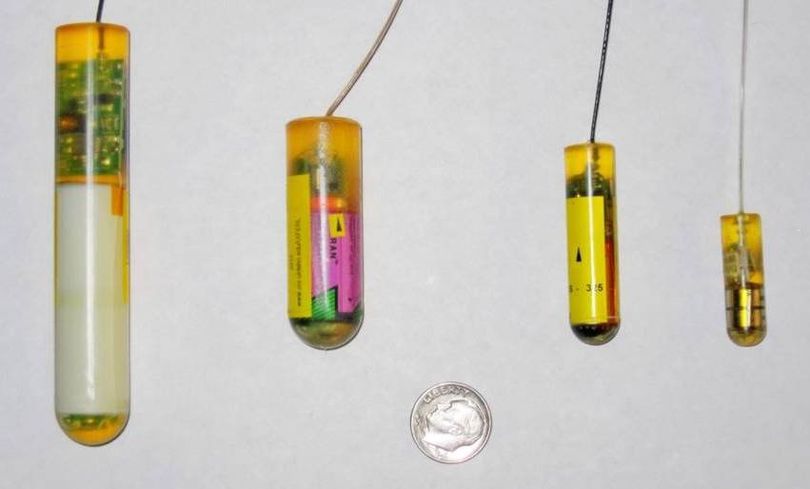Return tags in salmon, steelhead for $25

FISHING -- Area fishermen can get a $25 bonus if they catch a fish with a radio telemetry tag in the Snake, Columbia or Willamette Rivers.
Just return the tag to University of Idaho researchers and the check's in the mail.
The tagged fish are part of an ongoing effort to boost stocks of steelhead trout, chinook salmon and Pacific lamprey. The small tags monitor fish behavior and distribution.
The tags range in size from about three inches to smaller than a dime and can be detected by the presence of a wire from the fish's mouth or body. All but the smallest bear a UI label to assist in identification.
"The best way for anglers to return transmitters for cash reward is through our website" said Chris Caudill, leader of the project. "There is a pdf form to fill out and then return to UI. The return of transmitters to UI by anglers, hatcheries, agency personnel and others provides critical data on the final fate and location of the radio-tagged fish."
UI researchers say the return of the transmitters is essential to supporting the goals of the project, which include:
- Evaluating the effectiveness of fish ladders designed and built specifically for Pacific lamprey, an important native fish species. These lamprey passage systems were designed in collaboration with NOAA-Fisheries, the US Army Corps of Engineers and UI College of Natural Resources graduate students. They were installed at Bonneville and John Day dams on the Columbia River. This study aims to increase successful lamprey migrations through passageways at hydroelectric dams on the Columbia and Snake rivers. If successful, dams along the Columbia and Snake rivers may install fish ladders in the new design, which may increase Pacific lamprey that are important to the heritage and culture of the region's indigenous Indian tribes.
- Radio-tagging and monitoring adult salmon and steelhead at lower Columbia and Snake River dams. Data gathered through radio telemetry will help scientists determine how modification to dams affects passage and fates of the adult fish throughout the Federal Columbia River Power System.
- Radio-tagging and monitoring Chinook salmon and steelhead to determine migration patterns and pre-spawn mortality rates in the Willamette River Valley and its numerous tributaries with dams. Currently, many adult salmon reach spawning grounds, but die prior to reproducing for unknown reasons, potentially limiting productivity. The salmon and steelhead studies will contribute to regional salmon recovery efforts currently underway by regional, federal, state and tribal agencies.
This project is supported by a $2.7 million grant from the U.S. Army Corps of Engineers and additional participants include: the UI Echohydraulics Research Laboratory in Boise, the National Marine Fisheries Service, the U.S. Forest Service Rocky Mountain Research Station, the Oregon Department of Fish and Wildlife, and Oregon State University's Cooperative Fish and Wildlife Research Unit.
